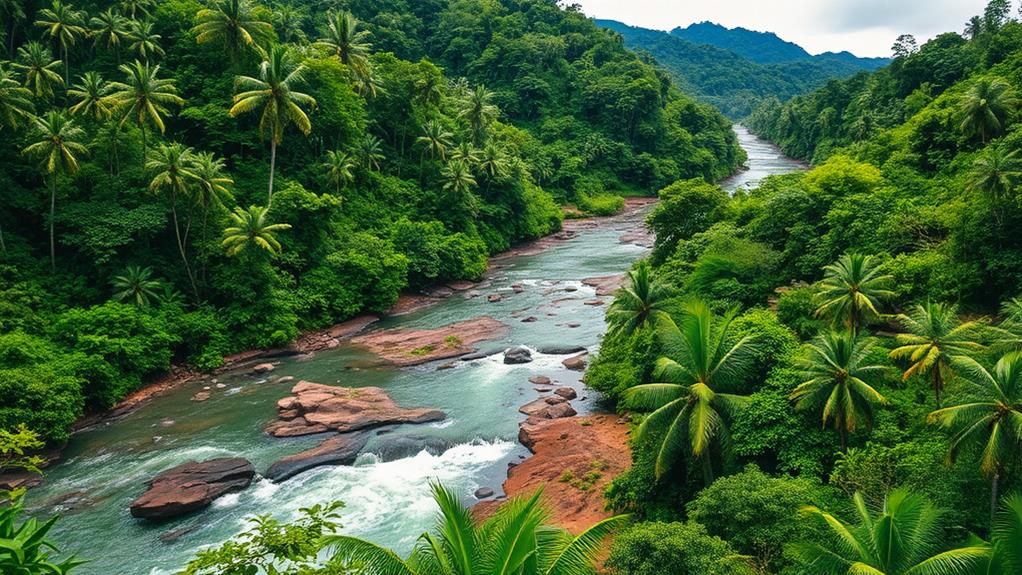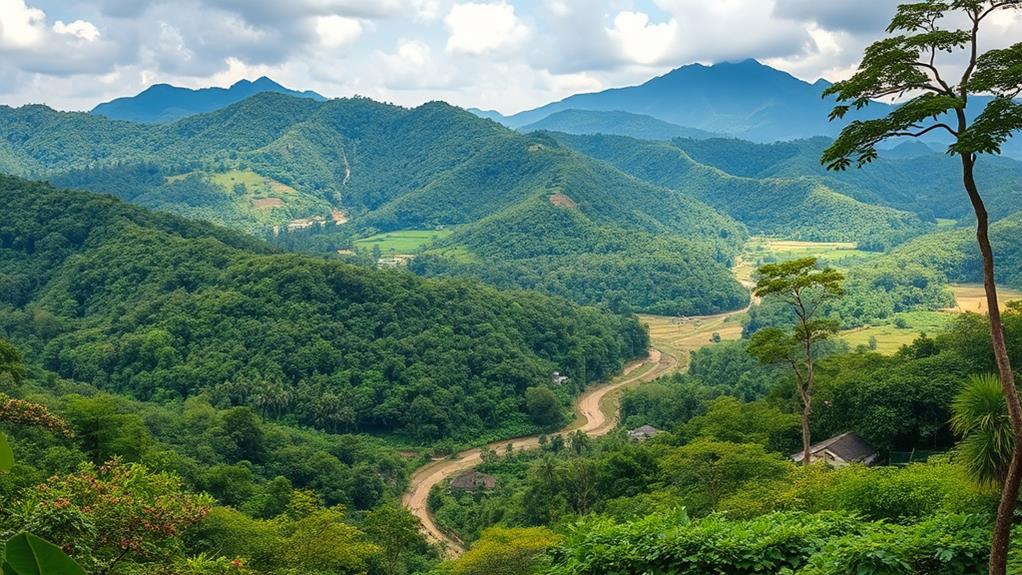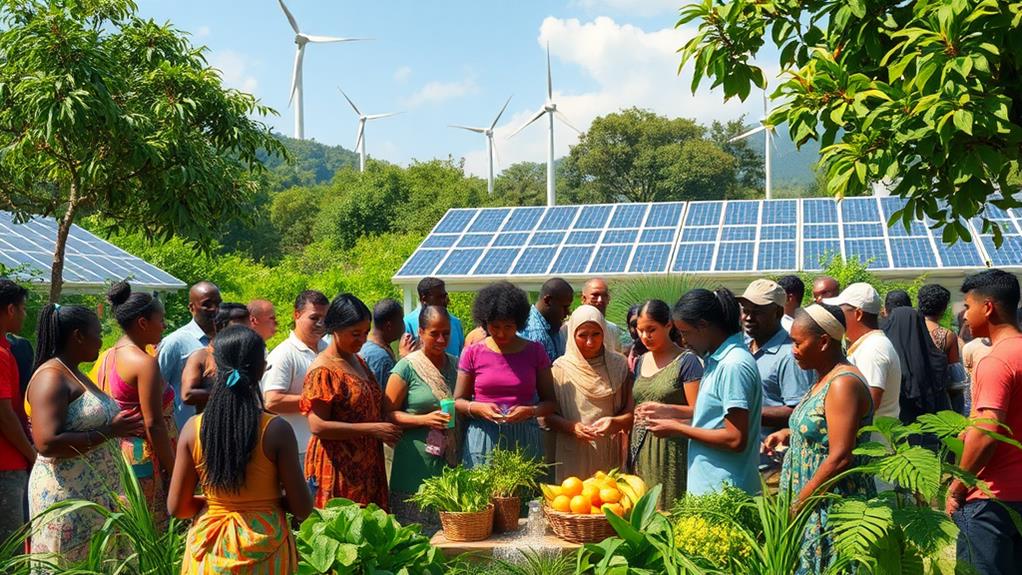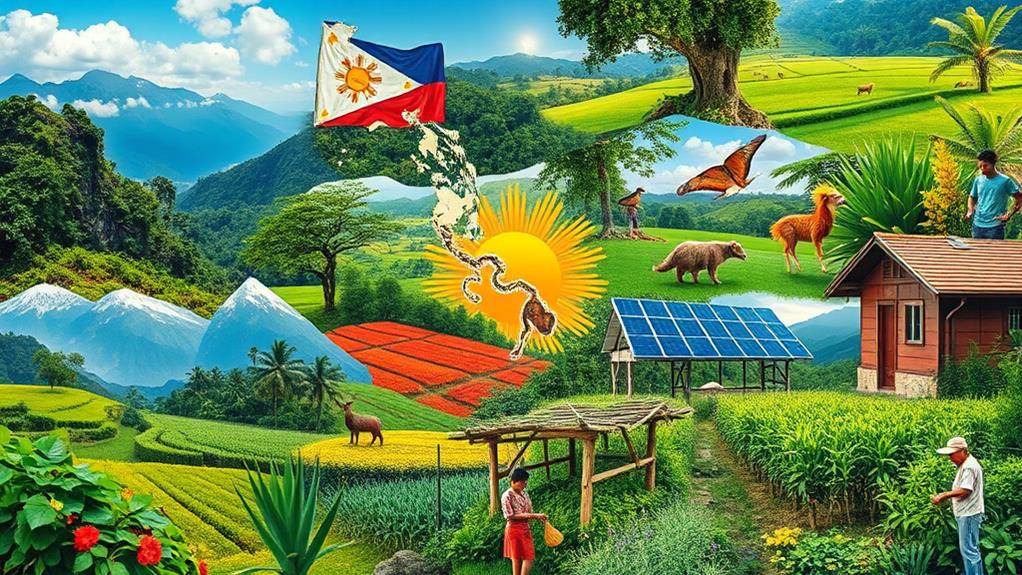Natural resources are essential for the Philippines to reach its Sustainable Development Goals (SDGs).
Agriculture employs 25% of the workforce, providing jobs and food.
Sustainable fisheries support 1.6 million households, helping many families thrive. Proper management of these resources leads to economic resilience, social equity, and environmental sustainability. For example, programs like WAVES-Philippines help include natural resources in economic planning, which leads to better decision-making.
However, the country faces challenges such as overfishing and illegal logging. These issues can slow down progress towards the SDGs.
By focusing on sustainable practices, the Philippines can secure long-term benefits for its people and the environment. Overall, these efforts are crucial for creating a sustainable future for the nation.
Natural Resources Overview

The Philippines can use its natural resources to support sustainable development. The country has many valuable minerals, such as gold, copper, nickel, and chromium, which can help boost the economy. The government is aware of this potential and is taking action through programs like WAVES-Philippines. This program helps track natural resources in the country's economic accounts, making sure these resources are used wisely for long-term benefits.
The government has created preliminary asset accounts for important minerals. These accounts provide important information that helps leaders make better decisions. For example, the data allows them to weigh the economic benefits of mining against its environmental impact.
In areas like the Laguna Lake basin, the government has also set up ecosystem accounts to show the value of nature in planning for development.
Importance of Sustainable Management
Sustainable management of natural resources is essential for the Philippines to reach its Sustainable Development Goals (SDGs). A large part of the country's economy relies on agriculture, fisheries, and forestry.
By using sustainable practices, the economy can become more resilient and protect the environment. This helps support the jobs of millions of people and increases food security, especially for rural communities that depend on these resources.
The WAVES initiative shows the need to include natural resources in national economic accounts.
Valuing natural capital helps in strategic planning that recognizes the importance of ecosystems. This leads to a circular economy, which encourages sustainable consumption and production that benefits long-term growth.
Additionally, the Philippines has started natural capital accounting.
This includes tracking resources like gold, copper, and nickel. By monitoring how these resources are used, policymakers can make better decisions that follow sustainable management principles.
Prioritizing sustainable management of natural resources can create a stronger economy and a healthier environment, ensuring the Philippines can meet its SDGs for future generations.
Economic Contributions of Natural Resources

Natural resources in the Philippines play a vital role in the economy. They support various sectors and help people earn a living. Here are the main contributions of natural resources:
- Mining Sector: The mining of minerals such as gold, copper, and nickel contributes about 1% to the GDP. This sector provides important revenue and job opportunities for many Filipinos.
- Agriculture: Agriculture relies heavily on natural resources and employs around 25% of the workforce. It's crucial for food security and helps reduce poverty in the country.
- Biodiversity and Eco-Tourism: The Philippines is home to over 52,000 species, which supports eco-tourism. This helps local economies grow and encourages conservation efforts.
- Marine Resources: The country has long coastlines, and the sustainable management of fisheries supports about 1.6 million households. This sector is essential for providing food and jobs.
The Philippines recognizes the importance of these resources through programs like WAVES.
Environmental Sustainability and Conservation
The Philippines is focusing on environmental sustainability and conservation due to concerns about resource depletion and climate change. The country is integrating natural resource management into its economic planning to support the Sustainable Development Goals (SDGs).
For example, developing ecosystem accounts in areas like the Laguna Lake basin and Southern Palawan helps to value natural resources and make better decisions.
The program WAVES-Philippines is important for including natural resources in development strategies. This program shows how valuable these resources are for sustainable growth. By investing in natural capital accounting, the Philippines makes sure that the value of resources is included in national accounts. This helps everyone understand the importance of environmental sustainability.
Moreover, reforestation and forest rehabilitation are effective ways to improve ecosystem services. These efforts not only help preserve biodiversity but also support the goals of the SDGs.
Social Equity and Community Benefits

Equity in resource management is important for community well-being in the Philippines. It helps marginalized groups, especially in rural areas where more than 70% of people rely on agriculture and fishing, to succeed.
Here are some important points to consider:
- Livelihood Opportunities are created through sustainable resource management. This approach provides jobs, which helps improve economic stability for those in vulnerable situations.
- Natural Capital Accounting ensures fair distribution of resources. By tracking the benefits from natural resources, communities become more resilient against environmental changes.
- Access to Clean Water is improved with sustainable practices. This is essential for underserved communities and supports the United Nations Sustainable Development Goal 6, which focuses on clean water and sanitation.
- Ecosystem Services highlight the value of nature. Programs like WAVES show how accounting for ecosystem services can guide policies that ensure fair access to these resources, which enhances community well-being.
Challenges in Resource Management
Resource management in the Philippines faces serious challenges that harm sustainability and community resilience. Illegal logging and mining are common, leading to environmental damage and loss of biodiversity. These actions reduce the country's natural resources and threaten the ecosystems that communities depend on for survival.
Water scarcity is another major issue, worsened by frequent droughts and floods. This problem affects agricultural productivity and access to clean water, making it difficult for farmers and families to thrive.
Overfishing and unsustainable fishing practices also threaten marine resources. Coastal communities rely on fishing for their livelihoods and food security, so this depletion is a critical concern. Sustainable fishing practices are needed urgently to protect these communities.
Additionally, land use conflicts arise from competing needs for agriculture, urban growth, and conservation. This makes it hard to manage land effectively and can lead to disputes among different groups.
Finally, the Philippines lacks sufficient data on natural capital. Without accurate information, it's hard to create effective policies for resource management. This gap slows progress toward the Sustainable Development Goals (SDGs).
To tackle these challenges, a strategic and cooperative approach is essential to manage natural resources sustainably while protecting the environment and supporting community resilience.
Case Studies in the Philippines

The Philippines faces challenges in managing its natural resources. Case studies show that strategic initiatives can improve sustainability. One example is the WAVES-Philippines initiative, which works to include natural resources in national economic accounts. This aligns with the Philippine Development Plan (PDP), helping leaders make informed decisions using important data.
Preliminary accounts for gold, copper, nickel, and chromium from 2000 to 2012 show their economic value.
A scoping study on mangrove accounts highlights how important coastal ecosystems are for biodiversity and supporting coastal communities.
Ecosystem accounts for the Laguna Lake basin and Southern Palawan demonstrate effective ways to manage important resources. The cooperation between NEDA and various government agencies helps integrate natural resource accounting into policy.
These case studies underline the importance of natural resources for sustainable development.
They also show that ecosystem accounts can help create better policies. Using these findings, the Philippines can work toward sustainability, ensuring that economic growth and ecological health go hand in hand.
Future Directions for Sustainable Development
The Philippines must integrate the Sustainable Development Goals (SDGs) into local and national policies for effective sustainable development.
Natural resource management should be a top priority. The government is taking steps to invest in training local governments, which will help improve the implementation and monitoring of sustainable practices.
Collaboration among stakeholders is vital for aligning national policies with SDG objectives. This is especially important in areas like agriculture and environmental conservation.
Working together allows for different ideas and resources to create new solutions for challenges.
As the country confronts issues like climate change and resource depletion, it's important to develop adaptive strategies.
Upcoming projects should focus on localized actions, giving communities a key role in managing and conserving natural resources.
Questions and Answers
What Is the Role of Natural Resources in Sustainable Development?
Natural resources are essential for sustainable development. They provide materials and services that support life and economic activities. For example, forests supply timber and clean air, while rivers offer water for drinking and irrigation.
Effective management of these resources means using them wisely to avoid depletion. This approach includes practices like recycling and using renewable energy sources, such as solar and wind power.
Environmental conservation protects ecosystems and biodiversity. Healthy ecosystems support agriculture, fishing, and tourism, which are vital for economic growth. For instance, protecting coral reefs helps maintain fish populations, benefiting local fishermen.
What Are the Strategies to Achieve Sustainable Development in the Philippines?
To achieve sustainable development in the Philippines, focus on community engagement. This means involving local people in decision-making. For example, local groups can participate in planning environmental projects.
Next, strengthen policy frameworks. This involves creating and enforcing laws that support sustainability. For instance, policies can promote recycling and waste reduction in cities.
Another important strategy is to invest in renewable energy. This includes using solar and wind power instead of fossil fuels. For example, building solar farms can provide clean energy and create jobs.
Finally, implement education initiatives. Teaching citizens about sustainability helps them understand their role in protecting the environment. For instance, schools can include lessons on conservation and climate change.
What Are the Natural Resources in the Philippines?
The Philippines has many natural resources. These include mineral resources, such as gold, copper, and nickel. The country also has diverse plant and animal life, which supports its rich biodiversity. Additionally, the Philippines has important water management systems that help provide clean water. The potential for geothermal energy is high, which supports the use of renewable energy. These resources are crucial for sustainable growth and environmental conservation.
Why Is It Important for the Philippines to Participate in Achieving the Sustainable Development Goals?
Participating in the Sustainable Development Goals (SDGs) is important for the Philippines because it shows global responsibility. Engaging in the SDGs helps drive economic growth by creating jobs and improving infrastructure. For example, investing in renewable energy can provide cleaner power and new work opportunities for Filipinos.
Additionally, involvement in the SDGs promotes environmental conservation. This means protecting natural resources like forests and clean water. For instance, sustainable farming practices can help maintain soil health while providing food.
Finally, supporting the SDGs encourages social equity. This ensures fair treatment and opportunities for all people, regardless of their background. Programs that focus on education and health care can help lift communities out of poverty.